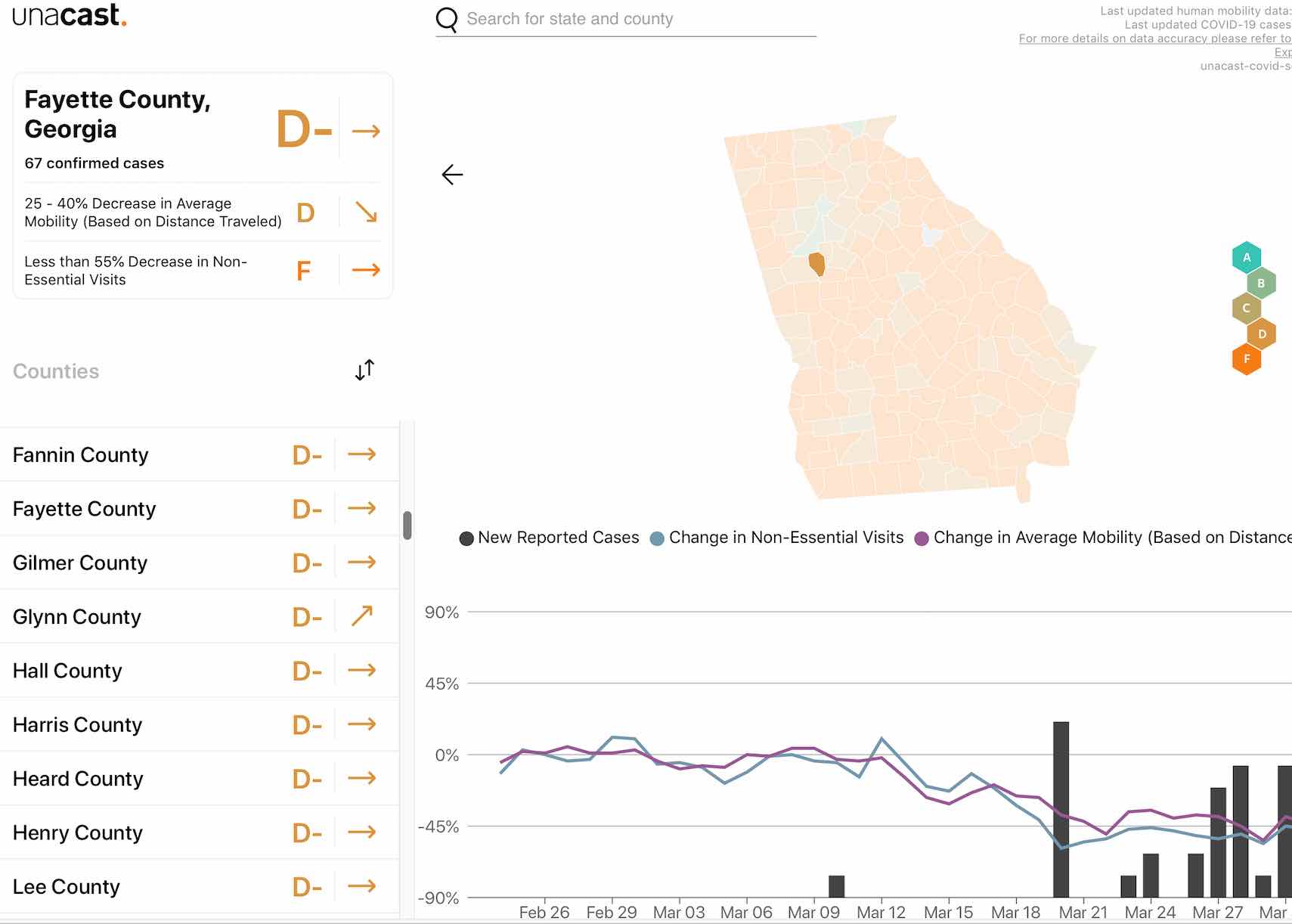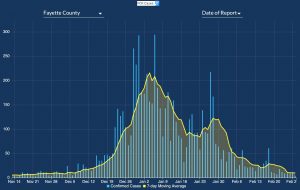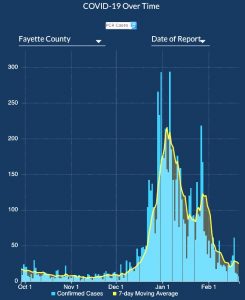Fayette County, you get a grade of “D-minus” for your social distancing activity during the Covid-19 outbreak.
So says a Norway-based company that assembles location data from your mobile devices. And that data, says Unacast, tracks people’s movements and distances traveled, whether they’re walking, running or driving.
Using that data, the company classifies that into average mobility and even non-essential visits. How do they know what’s essential and non-essential? They know where you started your trip — usually home — and where you stopped, whether at a pharmacy or a home improvement store. Using that information, they decide whether you made an essential trip or not. And they’ve been doing this tracking for many months now, well before the coronavirus outbreak.
So they decided to compare what we now call social distancing before and after Covid-19 shelter-in-place orders.
For Fayette, the Unacast data purportedly shows only a 25% to 40% decrease in distance traveled, which the firm gives a grade of “D,” with “A” being best or most compliant, and “F” being least compliant.
That’s not Fayette’s worst grade. The data purportedly show a less than 55% decrease in non-essential visits, which merits an “F.”
If it’s any consolation, our neighbors in Coweta County have received the same grades as Fayette, as of April 6.
The kicker is that almost all Georgia counties receive a grade of “D” or worse. The highest grade given is “B-minus,” and only Fulton and Towns counties rate that grade. The “C” counties are Clarke, Baldwin, Chatham, Cobb, DeKalb and Dougherty counties. The irony is that Fulton and Dougherty lead the state in deaths and numbers of confirmed Covid-19 cases.
The other 151 Georgia counties get a “D” or worse. Overall, Georgia is a “D.”
Unacast admits that their methodology might not be perfect, particularly in separating out “essential” and “non-essential” travel. “Our current standard is: ‘essential’ comprises grocery, pharmacy, and pet supplies; and ‘non-essential’ comprises all other non-grocery retail goods and services,” the company says. “We recognize that the differentiation between essential and non-essential is not hard-and-fast, nor is it the same in all places, and will update this standard as we learn more.”
How does this Norwegian version of “Big Brother” get its data? Unacast says: “mobile application developers and publishers, data aggregation services, and providers of location-supporting technologies. The technologies utilized by the partners interact with mobile devices in the physical world through apps, GPS, mobile device Bluetooth connections, and Wi-Fi connections.”













Leave a Comment
You must be logged in to post a comment.